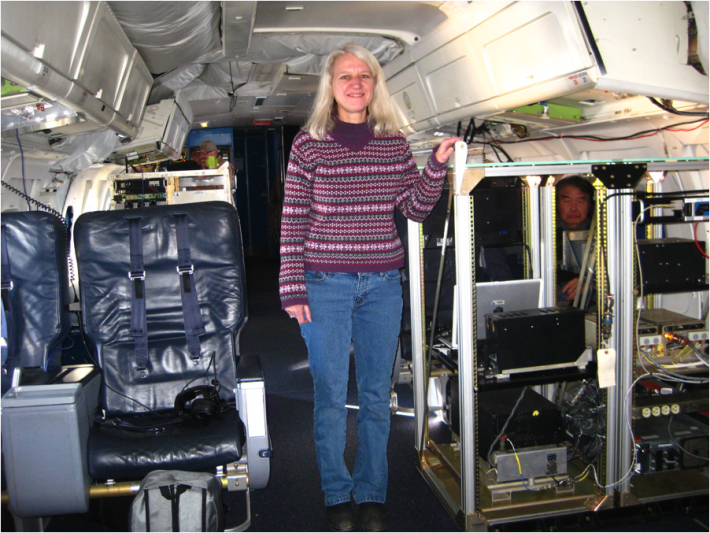Up in the Air in the DC-8 Over the Weekend
Gail Skofronick-Jackson is the Deputy Project Scientist for GPM at Goddard Space Flight Center in Greenbelt, Md. She specializes in the remote sensing of snow, and is currently in Bangor, Maine where the DC-8 airborne research laboratory is stationed for the GCPEx campaign. She wrote to us over the weekend about Saturday's flight to get background measurements from no-snow conditions.
Today we are taking a short flight to measure surface information over our GCPEx field campaign region. It is important to know what our surface “looks like” with our instruments for clear-air conditions because we can “subtract” the surface signal when we are observing falling snow. It’s like trying to weigh your luggage to make sure that it is under 50 lbs so you don’t get charged extra at the airport: first you weigh yourself (like clear-air surfaces), then you weigh yourself holding the luggage (snow falling over the surfaces), finally you subtract the two leaving just the luggage weight (only the falling snow signal).
This is my first time on the NASA DC-8 research aircraft since 2001. With all the rules and regulations on commercial aircraft, and the packing in of passengers, this DC-8 almost appears rule-free and empty. We can wander around the aircraft except during takeoff and landing. We have two main instruments onboard, the COSMIR radiometer and the APR-2 radar, and 18 passengers. The research aircraft can hold many more instruments and people, but GCPEx just didn’t need those instruments for measuring snow.
To top off the flight, the pilot’s let me sit in the cockpit for the landing. Exhilarating!
All in all this was a great start to my participation in the field campaign. Tomorrow Sunday 22 January 2012 we will not fly. The guys are excited because they can watch football!
 Gail Skofronick-Jackson standing next to instrument controls inside the DC-8.
Gail Skofronick-Jackson standing next to instrument controls inside the DC-8. Credit: NASA / Gail Skofronick-Jackson


